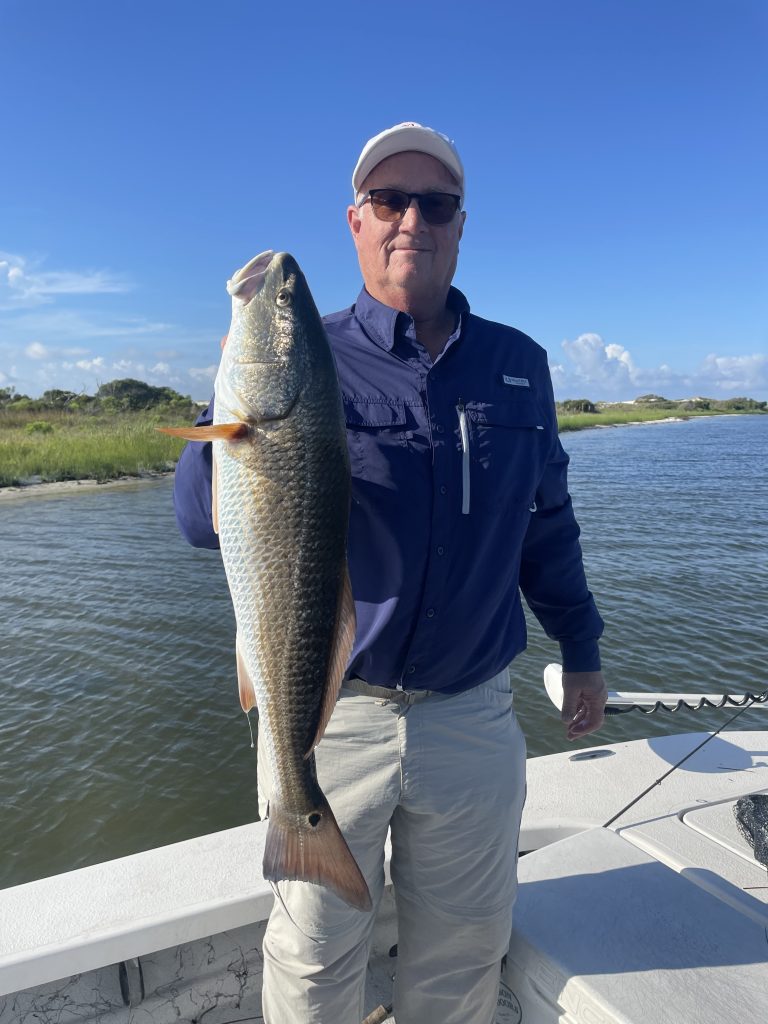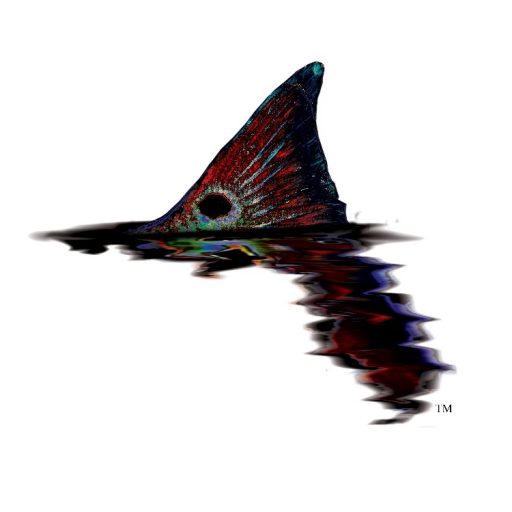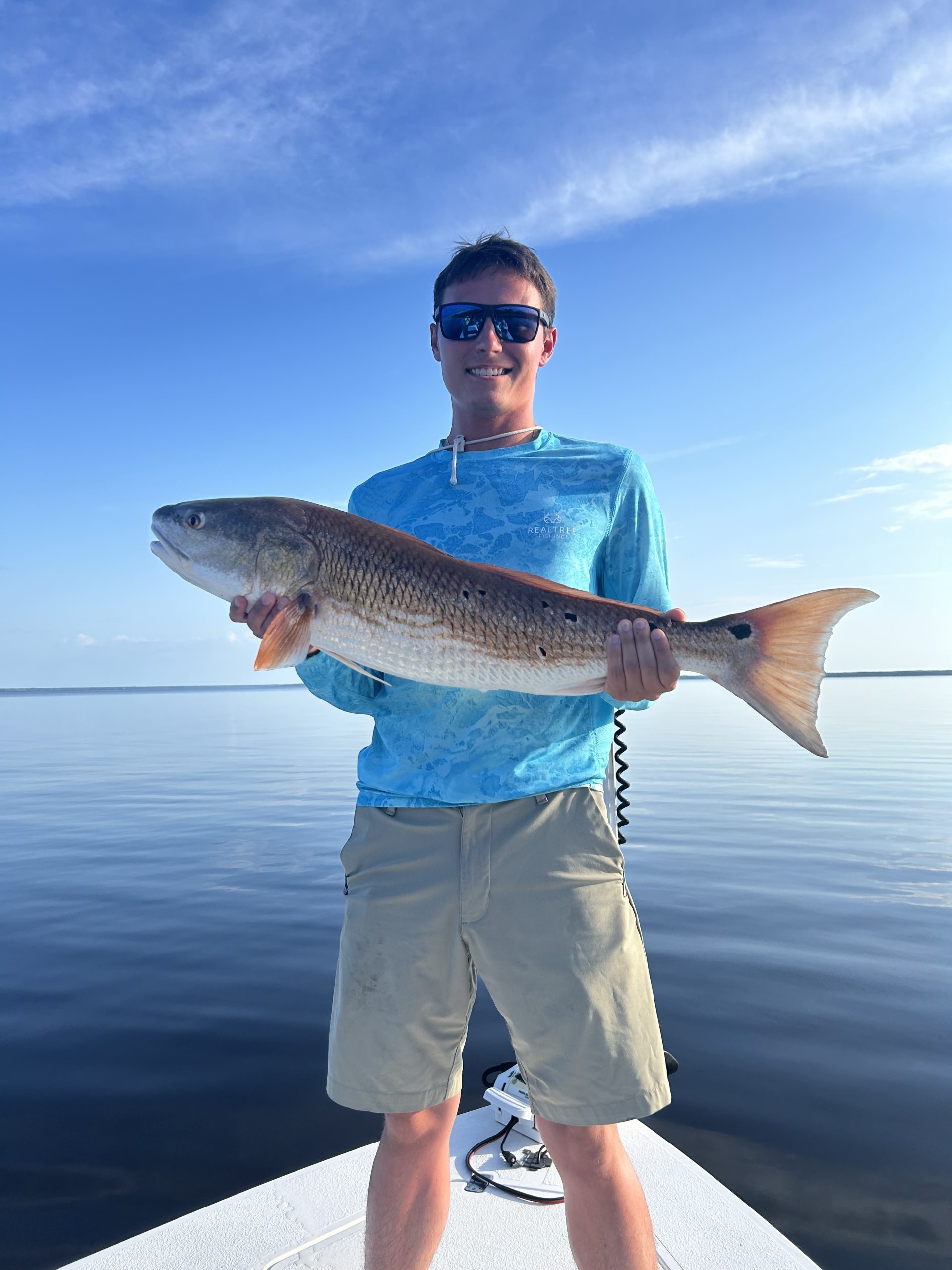
Choctawhatchee Bay, a jewel nestled along Florida’s Panhandle, shimmers with an allure that transcends its turquoise waters and sugar-white sand beaches. Beneath the surface, a fierce crimson warrior thrives: the redfish, a prized catch that ignites the passion of anglers across the globe. For those seeking an unforgettable adventure, unlocking the secrets of redfish in Choctawhatchee Bay promises an experience etched in adrenaline and satisfaction.
This 4,500-acre bay boasts a diverse ecosystem, harboring lush spartina marshes, expansive flats, and winding oyster bars, each a microcosm teeming with life. Redfish, known for their powerful runs and acrobatic leaps, navigate these underwater labyrinths with an almost mythical cunning. Understanding their behavior and habitat preferences is paramount to outsmarting these wily adversaries.
Seasonal Symphony: When the Redfish Run
Choctawhatchee Bay comes alive with redfish activity throughout the year, but astute anglers adapt their strategies to the ever-changing seasons. Here’s a glimpse into the redfish’s seasonal dance:
- Spring (March-May): As water temperatures rise, redfish emerge from their winter slumber, transitioning from deeper channels to shallow flats in search of food. This period offers prime opportunities for sight fishing, where skilled anglers stalk their crimson quarry in the crystal-clear waters.
- Summer (June-August): The heat drives redfish to seek refuge in cooler, deeper waters near oyster bars and jetties. Drift fishing or bottom fishing with live bait or cut bait becomes the preferred approach during these sultry months.
- Fall (September-November): As autumn paints the bay with vibrant hues, redfish embark on their pre-spawn feeding frenzy. They prowl the flats in larger schools, making them susceptible to lures that mimic baitfish or crustaceans.
- Winter (December-February): The cooler temperatures see redfish retreating to deeper channels and congregating around structures like bridges and pilings. Jigging with soft plastics or live bait fishing near these structures are effective techniques during this time.
The Arsenal: Tools for the Trade
Conquering redfish in Choctawhatchee Bay requires an arsenal carefully chosen to match the season, tides, and targeted locations. Here are some key weapons in your redfish-fighting armory:
- Spinning Rods and Reels: Opt for medium-weight setups for versatility, allowing you to handle a variety of lures and baits effectively.
- Baitcasting Rods and Reels: Ideal for heavier lures and battling larger redfish, particularly in deeper waters.
- Lures: Choose from an array of options like topwater plugs, suspending minnows, jigs, and soft plastics,considering factors like water clarity, depth, and target area.
- Live Bait: Shrimp, pinfish, and menhaden are popular choices, offering a natural presentation that entices even the most cautious redfish.
- Cut Bait: Chopped squid, sardines, and mullet provide a cost-effective alternative to live bait, retaining scent and attracting strikes.
Beyond the Gear: Mastering the Tactics
Technique plays a crucial role in the success of your redfish quest. Here are some strategies to outwit these cunning adversaries:
- Sight Fishing: This requires stealth, patience, and a keen eye. Spotting tailing or cruising redfish on the flats and casting accurately are the hallmarks of this rewarding technique.
- Drift Fishing: Ideal for covering larger areas, this method involves drifting with the current while casting or trolling lures or bait near oyster bars, channels, and structure.
- Bottom Fishing: Effective in deeper waters, this technique involves anchoring near structure and using weighted bait or jigs to target redfish lurking on the bottom.
- Fly Fishing: This artistic approach demands skill and precision, but the reward of landing a redfish on a well-placed fly is unmatched. Choose flies that imitate baitfish or shrimp common in the bay.
Etiquette and Ethics: Respecting the Bay’s Bounty
As you embark on your redfish adventure, remember that you’re a guest in their domain. Practicing ethical and responsible fishing is crucial for preserving the delicate balance of Choctawhatchee Bay’s ecosystem. Here are some key principles to adhere to:
- Follow size and bag limits: Regulations are in place to ensure the sustainability of the redfish population. Respect these limits and release any undersized or over-slot fish unharmed.
- Handle fish with care: Use a landing net, wet your hands before handling the fish, and minimize the time it spends out of water to ensure its safe release.
- Dispose of trash responsibly: Leave no trace behind. Pack out all your garbage and fishing waste to protect the pristine beauty of the bay.
- Catching Speckled Trout in Fort Walton Beach, Florida: Your Ultimate Local Guide
- Fly Fishing in Fort Walton Beach, Florida: A Premier Angler’s Destination
- Spanish Mackerel Fishing: Tips, Techniques, and Seasonal Insights
- Spanish Mackerel Fishing in Pensacola, Florida – A Thrilling Inshore Adventure
- Pensacola Fishing Charters – Book the Best Inshore & Offshore Fishing Trips



Comments are closed